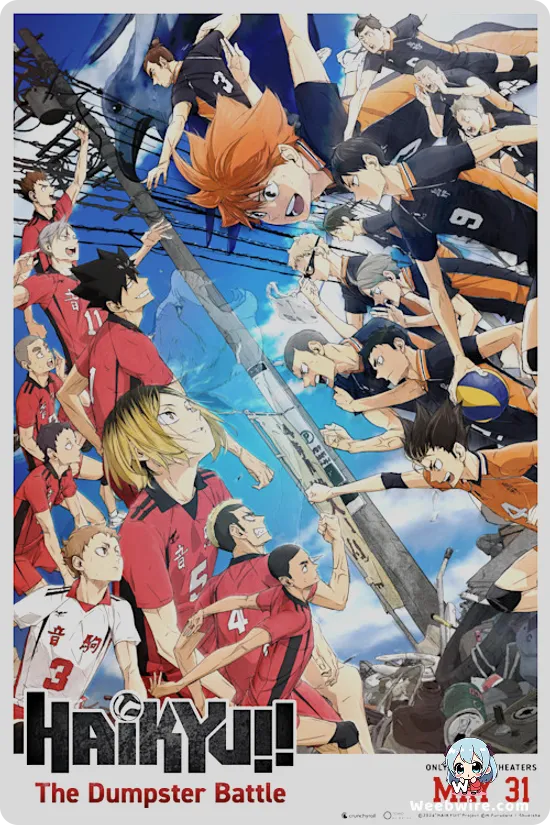Unveiling the Scar: Why 'Samurai X: Trust and Betrayal' Remains a Dark Masterpiece of Anime Storytelling

Within the vast panorama of anime, few titles resonate with the profound impact and critical acclaim garnered by Samurai X: Trust and Betrayal, known in its native Japan as Rurouni Kenshin: Tsuiokuhen. This acclaimed four-part Original Video Animation (OVA), released in 1999, stands as a stark, emotionally charged prequel to the more widely recognized and often lighter Rurouni Kenshin television series. For countless fans, particularly those who first encountered the main series, the OVA's dramatic tonal shift and mature themes arrive as a powerful, yet utterly compelling, revelation, illuminating a much darker, blood-soaked origin story for the legendary wanderer, Kenshin Himura. This is the tale of how a man became a myth, and the devastating cost of his past.
Trust and Betrayal masterfully deviates from the shonen conventions and comedic interludes that largely defined its television counterpart. While the main series embraced a blend of historical adventure, martial arts, and occasional humor, often punctuated by Kenshin's endearing 'oro?' catchphrase, the OVA plunges headfirst into a grim, unflinching portrayal of violence, love, and profound loss set against the tumultuous backdrop of Japan's Bakumatsu era. It transcends mere shonen action-adventure, evolving into a poignant jidaigeki (period drama) interwoven with a deeply moving, albeit fated, romance. This distinct artistic choice was a deliberate stroke of genius, frequently surprising and captivating new viewers who anticipate the familiar, more jovial Kenshin.
The Visionary Direction of Kazuhiro Furuhashi
Director Kazuhiro Furuhashi, a veteran who also helmed significant portions of the Rurouni Kenshin TV series, consciously adopted an entirely different artistic and narrative approach for the OVA. His vision championed historical accuracy, intense psychological depth, and a visually stunning, cinematic quality that elevated it far beyond the typical anime OVAs of its time. Furuhashi's direction is widely lauded for its masterful use of silence, subtle character expressions that convey volumes of emotion, and brutal, yet artfully choreographed, action sequences. These battles are far from glamorous; they are visceral encounters that communicate the true horror and gravity of Kenshin's past as the legendary Hitokiri Battousai, the feared man-slayer.
Studio DEEN's Animation Masterpiece
Studio DEEN, the animation powerhouse behind this masterpiece, despite varied reviews for its other projects, delivered an exceptional visual experience with Trust and Betrayal that remains a benchmark for anime OVAs. The unparalleled fluidity of motion, the intricate details in character designs and period-accurate backgrounds, and the breathtakingly realistic fight choreography were groundbreaking for its release era. The deliberate use of a muted color palette, predominantly grays, blues, and stark reds, powerfully enhances the narrative's somber, melancholic mood. This OVA is consistently cited by critics and fans alike as one of Studio DEEN's crowning achievements, a testament to their capabilities when entrusted with a powerful vision and ample resources.
Taku Iwasaki's Evocative Score
The melancholic and profoundly powerful musical score by Taku Iwasaki serves as another unsung hero of Samurai X: Trust and Betrayal. It perfectly complements the dark, introspective narrative, often employing traditional Japanese instruments alongside sweeping orchestral arrangements to evoke a pervasive sense of tragedy, destiny, and somber beauty. The music transcends mere background accompaniment; it is an integral component of the storytelling, amplifying emotional impact without ever becoming overbearing or manipulative. Many devoted fans consider Iwasaki's score for this OVA to be one of the greatest and most evocative anime soundtracks ever composed, capable of eliciting strong emotions even when listened to in isolation.
Expanding on Watsuki's Vision
While drawing inspiration from select chapters of Nobuhiro Watsuki's original Rurouni Kenshin manga that explored Kenshin's past, the OVA takes judicious artistic liberties, expanding upon and interpreting these pivotal events with incredible depth. It delves much deeper into Kenshin's internal conflicts, his moral erosion, and his profoundly tragic relationship with Tomoe Yukishiro, rendering their fated love story even more poignant and heartbreaking. The OVA's narrative is remarkably tighter and more focused than a direct manga adaptation might have been, streamlining certain elements to craft a cohesive, emotionally devastating, and utterly unforgettable arc.

Tomoe Yukishiro: The Catalyst for Change
Tomoe Yukishiro herself is arguably the most pivotal and intriguing character in Kenshin's formative years. Her quiet, enigmatic presence acts as the ultimate catalyst for Kenshin's vow never to kill again, a promise that defines his future self. A poignant, albeit tragic, revelation lies in the true origin of the iconic cross-shaped scar on Kenshin's cheek, a detail often misunderstood or entirely unknown by those who have not experienced the OVA. Tomoe is directly responsible for the second, completing line of that scar, inflicted in a moment of tragic irony that symbolizes both Kenshin's atonement and the deep, enduring wound of her loss. Her serene yet internally strong demeanor makes her a unique heroine, far removed from typical anime love interests, and her story is one of profound grief, calculated vengeance, and ultimately, a redemptive love that costs her everything.
This OVA's unparalleled success and profound impact significantly deepened the emotional weight and thematic richness of the entire Rurouni Kenshin franchise. It provided crucial context for Kenshin's later pacifist ideals, his constant internal struggles with his past, and his unwavering commitment to protecting the innocent. This prequel elevated his character from a skilled swordsman with a quirky personality to a complex, haunted individual striving for redemption, making him far more relatable and resonant with audiences. For many, Trust and Betrayal is the definitive portrayal of Kenshin's past, frequently cited as artistically superior to even the best moments of the main TV series due to its unwavering commitment to its mature themes and exceptional production quality. Its influence can be subtly observed in how later anime prequels or origin stories have approached similar narratives, showcasing a benchmark for mature storytelling within the anime medium. It remains a timeless masterpiece, demonstrating the power of animation to convey profound human drama.
Credits
Samurai X: Trust and Betrayal
Author
Nobuhiro Watsuki
Cover Art
Masahide Yanagisawa
Studio
Studio DEEN
Publisher
Shueisha
Producers





